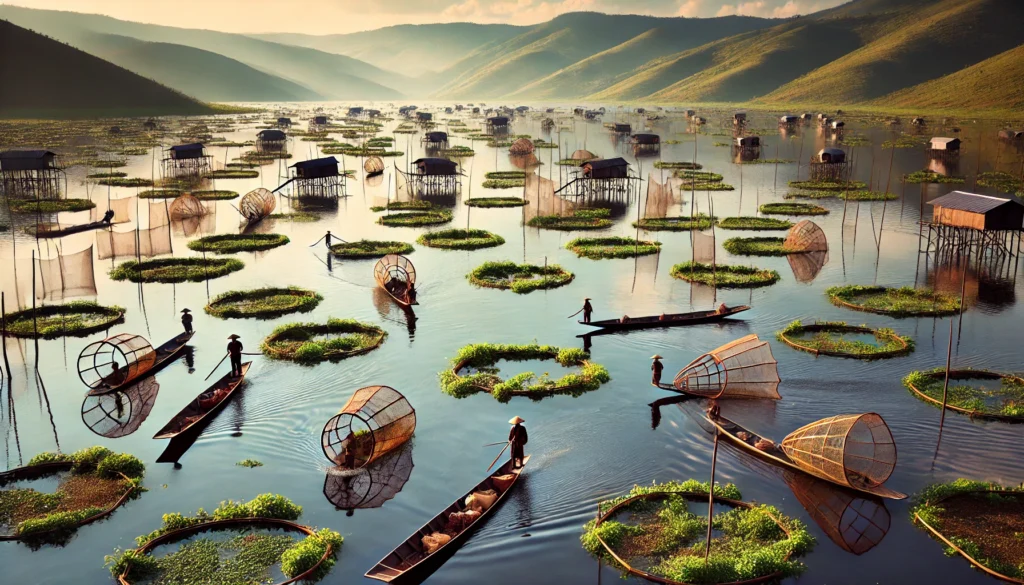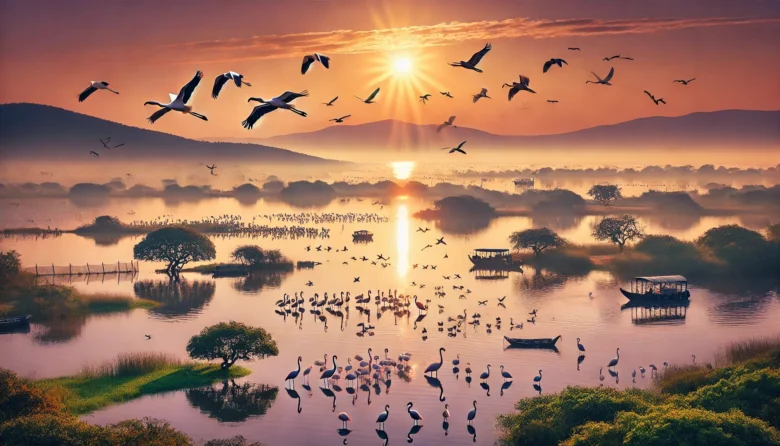Wetlands, often called the “kidneys of the Earth,” play a crucial role in maintaining ecological balance. In recent years, the science of wetland restoration has gained significant attention, especially in a diverse country like India, where these ecosystems are vital for biodiversity, water purification, and flood control. But what exactly is wetland restoration, and why should we care? Let’s dive into the science behind bringing these critical ecosystems back to life.
Understanding Wetlands
Wetlands are regions where water saturates the ground, either continuously or at specific times of the year, fostering a distinctive habitat for a variety of plant and animal species. They include marshes, swamps, bogs, and mangroves. In India, wetlands are found across diverse regions, from the Sundarbans in West Bengal to the backwaters of Kerala, each with its unique ecosystem.
The Importance of Wetlands
Wetlands provide numerous ecological services:
Water Purification: Wetlands filter pollutants from water, improving water quality.
Flood Control: They act as natural sponges, absorbing excess rainfall and reducing the impact of floods.
Biodiversity: Wetlands are home to a rich variety of flora and fauna, including endangered species.
Climate Regulation: Wetlands store carbon, helping mitigate climate change.

The Science of Wetland Restoration
Wetland restoration involves returning a degraded or lost wetland to its natural state. This process requires a deep understanding of the ecosystem’s biology, hydrology, and soil science. Here are the key steps involved:
Assessment and Planning: Before restoration begins, scientists assess the site’s current condition, historical data, and hydrological patterns. This helps in developing a detailed restoration plan.
Hydrological Restoration: Restoring the natural water flow is crucial. This may involve removing barriers like dams, creating channels, or using pumps to re-establish water levels.
Vegetation Management: Planting native vegetation is essential for stabilizing the soil, providing habitat, and improving water quality. Invasive species are controlled to prevent them from outcompeting native plants.
Wildlife Reintroduction: Restoring wetlands often involves reintroducing native wildlife. This can range from fish and amphibians to birds and mammals that were once part of the ecosystem.
Monitoring and Maintenance: Continuous monitoring ensures the wetland is recovering as planned. Maintenance activities, such as controlling invasive species and managing water levels, are crucial for long-term success.
Case Studies and Examples
Chilika Lake, Odisha
One of the most famous examples of successful wetland restoration in India is Chilika Lake. Once facing severe ecological degradation due to siltation and changes in water flow, the lake has been revitalized through concerted efforts by the government and NGOs. Today, Chilika is a thriving ecosystem, home to diverse wildlife and a vital resource for local communities.
Keoladeo National Park, Rajasthan
Keoladeo National Park, often referred to as Bharatpur Bird Sanctuary, is recognized as a UNESCO World Heritage Site and serves as a prominent example of wetland preservation. Originally created by humans, this wetland has been managed to sustain a diverse array of bird species. This park is a prime example of how managing water levels and habitat can create a haven for wildlife.
Loktak Lake, Manipur
Loktak Lake, which holds the title of the largest freshwater lake in northeastern India, is another significant example. Restoration efforts have focused on managing the phumdis (floating islands) and improving water quality. These efforts have not only restored the lake’s ecological health but also supported the livelihoods of local communities dependent on its resources.
Challenges in Wetland Restoration
Wetland restoration is not without its challenges. Some of the common obstacles include:
Land Use Conflicts: Competing demands for land can hinder restoration efforts.
Climate Change: Altered precipitation patterns and rising temperatures can impact restoration success.
Pollution: Persistent pollution from agriculture and industry can make restoration efforts more difficult.
Funding: Securing adequate funding for long-term projects is often a challenge.
The Role of Policy and Community Involvement
Successful wetland restoration requires robust policies and active community involvement. Policies that protect wetlands and provide funding for restoration projects are crucial. Equally important is the participation of local communities in restoration efforts, ensuring that the benefits of restored wetlands are shared equitably.
Conclusion
Wetland restoration is a science and an art, requiring a deep understanding of ecosystems and a commitment to preserving our natural heritage. In India, where wetlands are crucial for biodiversity, water management, and climate regulation, restoring these ecosystems is more important than ever. By understanding the science behind wetland restoration and supporting these efforts, we can help ensure a sustainable future for both nature and people.
Author’s Note
As someone deeply passionate about environmental conservation, writing about wetland restoration has been a rewarding experience. It’s inspiring to see the positive impact that well-planned restoration projects can have on our ecosystems and communities.
G.C., Ecosociosphere contributor.


